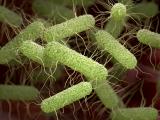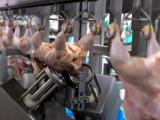Mar 8, 2011 (CIDRAP News) – Scientists who helped the FBI investigate the 2001 anthrax letter attacks today released the details of the genomic analysis that linked the anthrax used in the attacks to a flask in the custody of government scientist Bruce Ivins, who the FBI concluded was the perpetrator.
The investigators write that their work demonstrates the value of whole-genome sequencing as a microbial forensic technique, but they caution that it's not clear if the same approach would work with other biological agents. Their report was published online today in the Proceedings of the National Academy of Sciences.
The publication comes 3 weeks after the National Research Council (NRC) released a report saying that the microbiologic findings in the case were "consistent with" a link between the letter anthrax and the samples in Ivins' custody but did not constitute definitive evidence of a connection. The NRC conducted a lengthy review of the microbiologic investigation at the FBI's request, after a number of experts raised questions about the findings.
The FBI has said the scientific findings played a significant role in the investigation but that other kinds of evidence also were important in leading to the conclusion that Ivins launched the attacks.
Ivins committed suicide in July 2008 as the FBI was preparing to publicly accuse him in the case. The agency reported its findings in August 2008.
The new PNAS report was written by scientists from the Institute for Genome Sciences at the University of Maryland, the FBI, the US Army Medical Research Institute of Infectious Diseases, and Northern Arizona University.
They say that before the anthrax investigation, microbial forensics relied on genotyping schemes based on a small portion of a genome sequence. Whole-genome sequencing has become an important tool in recent years.
"The accuracy and reliability of whole-genome sequencing as a microbial forensic technique was not appreciated before the initiation of this project," their report states.
The article describes how culturing of anthrax spores from several of the letters mailed to media outlets and two US senators in 2001 produced colonies that varied in color, shape, and spore-forming ability. The investigators identified a few colony morphotypes that differed from the wild-type colonies of the Bacillus anthracis Ames ancestor strain, which were predominant in the cultures from the letter samples.
The scientists sequenced the genomes of anthrax from the minority colonies and compared them with that of the B anthracis Ames ancestor. They identified four verifiable mutations, which were linked to a regulatory protein involved in sporulation.
"The specific combination of morphologic variants and associated sequence found in the letters' spore preparations linked these evidentiary samples to one another because they are not found in other samples," the report says.
A University of Maryland press release says the scientists eventually determined that the anthrax used in the attacks came from at least two production batches that had been mixed together, each with its own unique distribution of variants. "Mixing the batches created a unique combination of genetic signatures that later helped them track the spore preparations to the source flask in the lab of Dr. Ivins," the release states.
As described in previous reports, the four genotypes were compared with anthrax Ames strain samples that the FBI collected from labs around the world. Eight of 947 of these isolates had all four of the mutations found in the variants from the letter samples, and these all came directly or indirectly from the anthrax that had been in Ivins' custody, the NRC said in its review. The NRC said this evidence was consistent with the view that the attack anthrax was derived from what Ivins had, but found that the FBI did not fully explore other possible explanations for the similarities.
Dr. Jacque Ravel, lead author of the PNAS study, said in the press release, "The science was one technique used to generate leads as part of a larger FBI investigation. Science tells us the spore came form that particular flask, but it's important to note that the science never pointed to Bruce Ivins. It was police work that did that."
The PNAS report says the investigation yielded important lessons about using whole-geneome sequencing in criminal investigations, but it's not clear if the same approach would work with other biological agents.
"B anthracis is a young and genetically homogeneous species that has features that contribute to this reduced genetic variability, such as spore formation and dormancy," the report states. Spores can lie dormant for decades, accumulating no mutations, and thus they provide a "snapshot" of the source they came from.
"If a similar attack had been perpetrated with Escherichia coli, Salmonella, or any non-spore-forming bacteria, it would have been more difficult to attribute minor genetic variations to a source sample," the article says. "The signal-to-noise ratio may be too great in other species and accurate attribution too onerous of a task with genome sequencing."
Rasko DA, Worsham PL, Abshire TG, et al. Bacillus anthracis comparative genome analysis in support of the Amerithrax investigation. Proc Natl Acad Sci 2011; early online publication [Abstract]
See also:
Feb 15 CIDRAP News story "NRC: Data insufficient for firm conclusion in anthrax case"
Feb 16 CIDRAP News story "Anthrax expert: NRC report supports FBI"


















